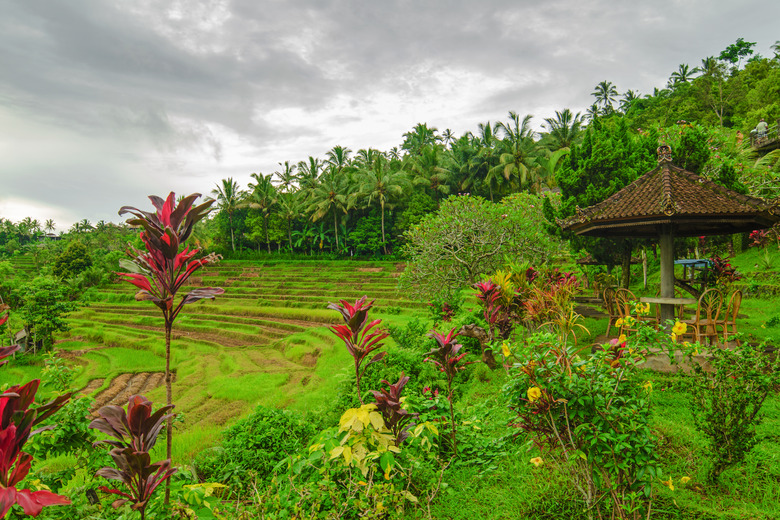Characteristics Of An Intertropical Convergence Zone
Weather on the Earth is driven by multiple factors, including thermal energy from within the Earth's core and from the sun. Certain areas of the Earth are known for specific weather patterns that occur as a result of these factors. One area that scientists, geologists and meteorologists study frequently is the Intertropical Convergence Zone, which is a band near the equator where the southern and northern trade winds meet.
Low Air Pressure
Low Air Pressure
In the Intertropical Convergence Zone, the northern and southern trade winds come together. Because of the rotation of the Earth, the winds cannot really cross the equator without losing energy. Instead of continuing over the Earth horizontally, the winds thus move vertically toward the upper atmosphere. The heating of the Earth's ocean currents by the sun assists in this process, making the air warmer and letting it rise. The result is that the Intertropical Convergence Zone has low air pressure near the Earth's surface. The lack of horizontal wind movement in the region caused sailors to nickname the Intertropical Convergence Zone, "the doldrums."
Precipitation/Humidity
Precipitation/Humidity
The frequent rising of air in the Intertropical Convergence Zone means that moisture constantly is being brought high enough in the atmosphere to a point cool enough to allow the moisture to condense into clouds. The Intertropical Convergence Zone therefore can see incredible amounts of precipitation and high humidity. Although some areas of the zone do have a dry season, others do not. Afternoon showers are a feature of the zone.
Storm Type
Storm Type
Rainfall in the Intertropical Convergence Zone typically is not gentle rainfall that lasts for long periods. Instead, the high amounts of energy from thermal and solar heating cause moisture to condense quickly into clouds in the hottest part of the day. Circular typhoons thus often form as the air currents move. Some of the strongest winds on the Earth have been recorded in these storms. Thunderstorms with heavy lightening also are common.
Intertropical Convergence Zone Location
Intertropical Convergence Zone Location
The Intertropical Convergence Zone is characterized by inconsistent location around the equator. As the Earth moves with the seasons, the area which receives the highest amount of heat energy from the sun varies. The thermal equator around which the Intertropical Convergence Zone forms thus moves, depending on the season. In some cases, this shift can result in the complete reversal of normal trade wind patterns, particularly in the Indian Ocean.
Impact of the Intertropical Convergence Zone
Impact of the Intertropical Convergence Zone
The characteristics of the Intertropical Convergence Zone have an enormous impact on weather all around the globe. Shifting of wind patterns in the Intertropical Convergence Zone can move thermal energy and moisture to different parts of the Earth than usual and can slow or even stop ocean currents. This affects all plant and animal life either directly or indirectly, since ecosystems are dependent largely on weather patterns and temperature.
Cite This Article
MLA
Thibodeaux, Wanda. "Characteristics Of An Intertropical Convergence Zone" sciencing.com, https://www.sciencing.com/characteristics-intertropical-convergence-zone-5606575/. 22 November 2019.
APA
Thibodeaux, Wanda. (2019, November 22). Characteristics Of An Intertropical Convergence Zone. sciencing.com. Retrieved from https://www.sciencing.com/characteristics-intertropical-convergence-zone-5606575/
Chicago
Thibodeaux, Wanda. Characteristics Of An Intertropical Convergence Zone last modified March 24, 2022. https://www.sciencing.com/characteristics-intertropical-convergence-zone-5606575/
